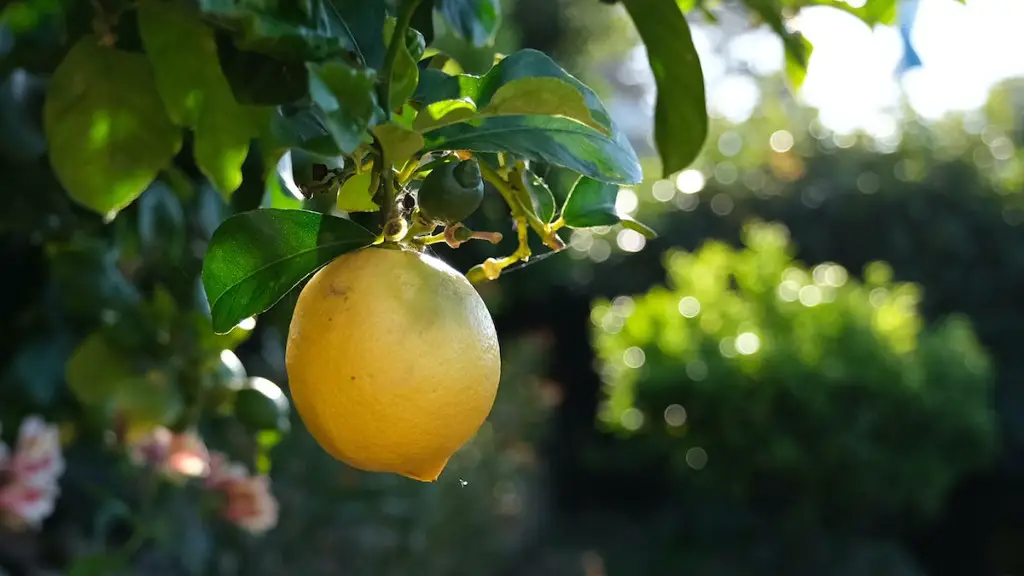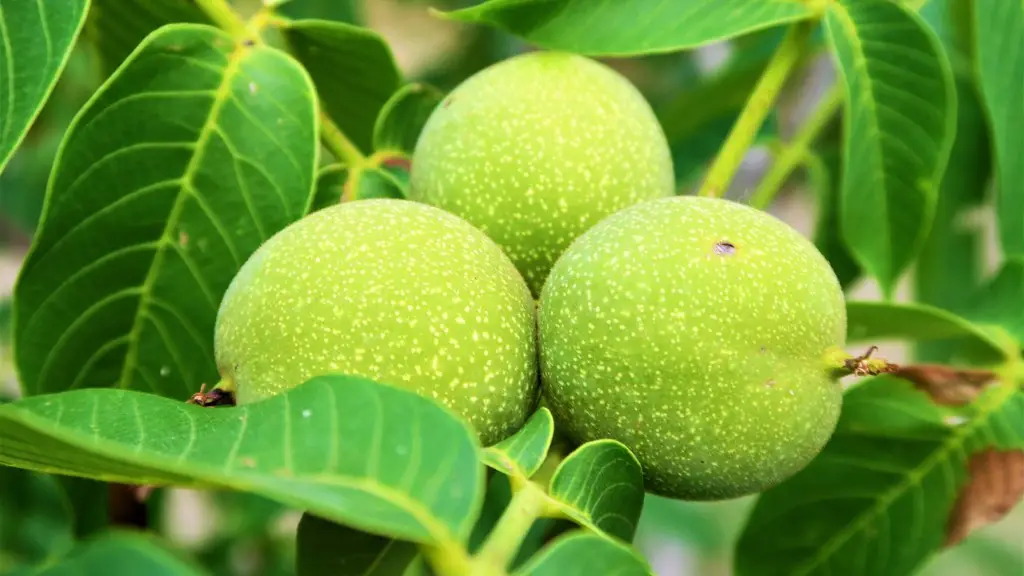When you’ve eaten the delicious avocado and removed the pit in the center, you may be tempted to put it out with the rubbish. But wait! You may be able to turn that pit into a thriving avocado tree, right on your own windowsill. Is this really possible? Well – yes! Although you’re unlikely to get a bumper crop, you can use a few simple steps to give it a try and see what results.
Caring for an avocado tree from a pit is an exercise in patience and it may take up to two years before you’ll see any fruit. But, it’s worth persevering as, when nurtured correctly, the tree can live for many years, giving you fresh produce for decades. It’s easy to understand why this is such an attractive proposition. Being able to grow something from a discarded piece of fruit is both practical and fun.
In order to get the best results, it’s important to follow the correct process. First, wash the pit to remove any remaining flesh and pulp. To encourage germination, cut it in half and try to remove the seed inside. It can be tricky, as many pits are densely packed and some have multiple seeds.
Next, place the pit in a jar of warm water, ensuring that at least half of the pit is below the surface. Growing an avocado tree from a seed requires tissue hydration, so it’s essential that you don’t let it dry out. Change the water daily, keeping it at a stable temperature of between 21-32°C. This will help the pit to sprout most successfully.
Once the pit has germinated, remove it from the water, pat it dry and then insert three toothpicks into it so that it will stay upright in a glass of water. Fill the glass with water, making sure that the water reaches halfway up the pit, and then place it in a warm, light location. Depending on the temperature and care provided, the germ should break through the pit in anywhere between a few weeks and six months.
Once the stem has reached a few inches long and has at least six leaves, you can transfer it to a pot. Use a mixture of sandy soil and peat moss. When added to the main soil mix this will help to ensure good drainage and provides vital nutrients like potash, which improve fruit production. Sit the pit in the soil so that two-thirds of it are above the surface.
Although the process is straightforward, it’s important to ensure that every step is followed carefully. According to experts, the success rate with this method is usually between one-third and one-half, depending on climate and care. As Virginia Aksimun, office manager at the All About Avocados Institute, notes: ‘Avocados are designed to survive, so the success of germinating a plant in this way is often dependent on the environment and care you can provide.’
Outside Conditions
Once the pit is planted and successful, it’s necessary to create the right conditions for the tree to thrive. Avocado trees require lots of sun and warmth and therefore, unless you live in a climate that supports their growth, it may be necessary to provide the artificial environment of a heated greenhouse. If this is necessary, it will be important to monitor the temperature continually, as the average preferred temperature for an avocado tree is around 17-20°C.
Moisture is also important for the growth of an avocado tree and it should be watered as frequently as necessary to ensure that the soil does not become dry or damp. Providing the tree with direct sunlight for at least six hours a day is also beneficial, as this will help it to remain healthy, ensuring the leaves are a rich, dark green.
Although time consuming, provided the right environment is established, and the climate is suitable, it is possible to grow an avocado tree in a pot without any additional fertilizer, as the pit will provide essential nutrients. And, once established, it should bear fruit in one to two years.
Soil Additives
It is possible to give more support to the growth of an avocado tree by fertilizing the soil. This is done to encourage strong growth, although there are various types of fertilizers specifically designed for avocado trees. For example, a fertilizer containing phosphorous will help to promote flowering and fruit production. It’s also possible to use general-purpose products to sprinkle on the soil to maintain a healthy balance of nutrients.
When adding fertilizer, the most important thing is to make sure it’s used in the correct quantities, as too much can be damaging for the tree. It’s also important to allow the fertilizer ample time to disperse, so it’s best to water it in well to ensure the nutrients reach the roots. If it’s done correctly, the tree should show signs of healthy growth within a few months.
Building a chemical barrier around the soil used in the pot is also beneficial, allowing you to control any pests that might cause damage to the plant. In this way, you can keep the avocado tree healthy, without having to use any form of insecticide that may harm the tree, yourself, or the environment.
It’s often possible to buy the necessary items at local garden stores and, if you’re buying fertilizer, it’s important to ask for advice and only purchase products that are suitable for your tree. Taking these preventive measures and caring for it correctly will ensure that your avocado tree remains healthy for many years.
Harvesting and Eating
When it comes to harvesting fruit from an avocado tree grown from a pit, it’s best to allow it to ripen on the branch. After it’s picked, the fruit can be stored until it’s ripe, at which point it should be refrigerated or consumed.
Eating the produce is the most enjoyable part of the process. When cutting into a fruit that’s been grown in your very own pot, there’s something special and rewarding about it, as it’s a visual reminder that nature works in incredibly powerful and mysterious ways.
Continuous Care
To ensure your avocado tree from a pit continues to produce fruit, it’s important to be vigilant and only prune as necessary. The best way to do this is to cut off any branches that are not healthy, or growing too close or straight, as this will allow other branches to get enough sun and air. Cutting the leaves away from the branches can also be helpful, as this will allow the maximum amount of sunshine possible to reach the remaining leaves. If the tree is trimmed carefully, you’ll be rewarded with more fruit.
When deciding on which pot to use, there is a range of choices to make, depending on your preferences and…budget. A simple terracotta pot is often adequate because it allows good drainage, but other pots are available that may be more aesthetically pleasing – although they’re often more expensive.
It’s also possible to clean and reuse the pit for a second tree, or you could store it for a year or two, during which time a much less vigorous germination may occur. This is an excellent way to get more avocado plants from a single pit.
Why Try This?
Avocado tree’s grown from a pit are a great way to bring a little bit of nature into your home. Even if a bumper crop isn’t expected, the feeling of being able to produce something from almost nothing is incredibly rewarding. And, there can be few more enjoyable uses of an empty jar than to use it to grow a new tree.
In addition to this, growing an avocado tree from a pit requires minimal cost and effort, yet still provides many of the benefits of having an outdoor tree, as the process can be conducted entirely indoors. Even if you’re living in a small apartment, there’s sufficient space to give it a try. For those without access to a garden, growing an avocado tree in this way is the perfect solution.
When cared for properly, an avocado tree can become the pride of any home and providing you with delicious, homegrown fruit to enjoy for many years to come.
Health Benefits of Eating Avocado
Avocados are renowned for their healthy properties, and it’s not surprising that they’ve become such a popular ingredient for health conscious people. Rich in monounsaturated fats and high in fiber and phytochemicals, they’re an excellent source of vitamins, minerals, and antioxidants that offer a range of potential health benefits.
Eating the fruit has been associated with lower blood cholesterol levels and improved heart health. Additionally, it’s believed that consuming avocado regularly may improve eye health and reduce the risk of some cancers, and there is some evidence to suggest that it can help with weight management. Because of their large size, avocados can make a meal more filling, and are also popular as a guilt-free snack.
Furthermore, avocado is a particularly nutrient-dense food choice, with a single avocado delivering 20 essential nutrients including, vitamin E, anything from 45-60 percent of your daily recommended amount. This makes it a great choice for anyone who wants to follow a healthy diet and ensure they get their recommended daily allowance of vitamins and minerals.
Keep It Going
It’s often possible for avocado trees to cross-pollinate, which can increase the yields of fruit. If you have a female and a male tree, ensuring they’re nearby each other will greatly improve production, as this will give the chance for the flowers to be pollinated by bees or wind.
Avocados can also be propagated using cuttings. This is done by removing a healthy shoot, including a few leaves and applying rooting hormone to the node. The cutting should then be placed in a pot with soil until the roots have developed and it’s ready to be planted.
When growing a tree indoors, it’s important to protect it from strong winds, as these can cause the branches to break. And, perhaps most importantly, it’s necessary to remain patient and battle through any setbacks. Nature is unpredictable so it’s important to cope with any unexpected events that may arise.
Native Region
Avocados are believed to have originated in Mexico and Central American countries, and are still grown widely across this region. In some countries, the fruit is seen as a symbol of fertility and is used in many traditional ceremonies, often as part of wedding preparations. Plus, the Aztecs are credited with being the first to cultivate the fruit and harvesting it for commercial use.
Avocados are now the fifth most-produced fruit in the world. They’re grown and eaten around the globe, with the US accounting for almost two-thirds of US production, and California being the highest-producing US state.
Chile, Mexico and Indonesia are also major producers and here, often during April and May, the fruits of the trees are harvested. Providing stable climatic conditions, this is a perfect time for the trees to produce delicious, ripe and juicy fruit.




